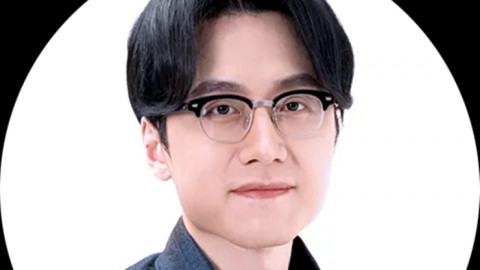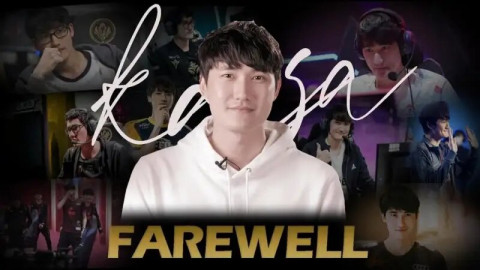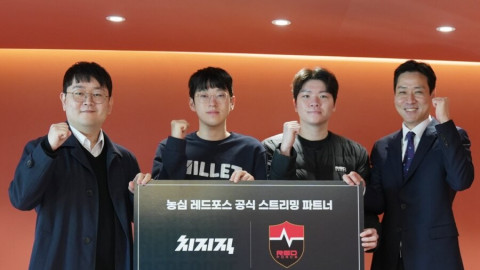
Team-based games like Overwatch typically require three distinct skill sets; mechanical ability, communication, and strategy. There is of course overlap between the three, but players generally don’t place the same amount of importance on each. A budding DPS player may wish to brush up on their Tracer mechanics to reach the next level, and we often see articles and guides teaching players how to communicate efficiently. When it comes to general strategy— information that applies to every single game you play—online resources often seem to fall short.
If you find yourself lacking focus or commonly misplaying, thinking about strategy and your mindset is crucial and cannot be neglected if you wish to climb to greater heights. While strategy does include notions such as ‘playing to the meta’ or ‘combining Ultimates,’ our strategic spotlight today is more about your own individual contribution to a game.

Competitive Empathy is a concept that I picked up while playing another game, Magic: The Gathering. As empathy itself describes the ability to understand another, competitive empathy refers to the ability to get inside your opponent's head, allowing you to read their intentions. Armed with that knowledge, you can move to counter them through a process usually referred to as ‘next-levelling.’ In card games such as Magic or Poker, where the denial of information is crucial, competitive empathy most commonly reveals itself in the form of bluffs.
Although there are some comparable scenarios in Overwatch, awareness and game knowledge are far more important tools to maximize the potential choices you can make in-game, allowing you to be as flexible as possible and ‘next-level’ your opponents. I’ve divided these levels quite arbitrarily, but hopefully, they will serve as a useful tool to explain the concept.

The first hurdle to overcome is auto pilot and solo play. I consider this to be Level -1, as players in this category tend to be playing below their own ability. Players resort to autopilot for a myriad of reasons, but the end result is always some form of disconnect between what the player is doing, and what they know they should be doing to raise their odds of winning a game. There are lots of things you can look out for to tell if you’re in this group;
● Playing while distracted by something other than the game.
● Tilted as a result of griefers or a loss streak.
● Never bothering to communicate with your team (voice or pings).
● Playing solo without concern for team comp or general awareness.
If you find these things are often affecting you, it may be wise to take a small break from the game and allow yourself to recover. Players of all skill ratings can find themselves operating at Level -1, and no amount of forced gameplay is going to help—autopilot is the result of burnout, and it’s only fixed with a fresh mindset.

Level 0 is the baseline. The majority of players operate at this strategic level, and it’s characterized by a solid foundation of game knowledge but also a very reactionary playstyle. There are a few things you can look out for to tell if you are operating at Level 0;
● Commonly somewhere between Platinum to Low Master ranks.
● You know which heroes work well together for Ultimate/ability combos.
● Using voice chat to communicate with your team in a productive manner.
● You switch to counter picks when struggling against specific enemy heroes.
Simple examples of Level 0 play would be things like swapping a DPS to McCree to deal with a pesky Tracer, calling out Hanzo to save his Dragonstrike to use with your Graviton Surge or preparing to use Reinhardt’s Earthshatter when you see the enemy Rein’s shield start breaking.

Beyond this lies Level 1, which is often the bane of Diamond rated players. At this level, players tend to begin expecting enemy mind games on a basic level. A common example is holding Genji’s Dragonblade when faced with an enemy Zenyatta who likely has Transcendence ready to counter it. Because Zenyatta never feels forced to use his Ultimate, you end up never using Dragonblade and probably could have charged another in that time. You may be playing at Level 1 if;
● Mechanically you feel competent, but you feel ‘hard stuck’ (particularly in Diamond).
● You hold your Ultimate too long, and die without using it multiple times.
● You find yourself being outplayed by players that you feel are less skilled than you, because you are expecting them to behave differently than they actually do.
If you often find yourself in these situations, you’re actually much better off ignoring the urge to try mind game your opponents, and instead focus on consciously playing at Level 0 (that is, until you reach the next level of play).

You truly begin to ‘next-level’ your opponents when you reach Level 2. The logic behind a Level 1 decision is not incorrect—but you aren’t forming decisions with everything considered. To reach Level 2, you need a firm grip on the concept of value. Examples at this level would include;
● Knowing which Ultimates are worth trading for each other, or how many to use per. fight.
● Assessing the enemy player's skill level or play style, and adapting to it.
● Predicting how the enemy team will respond to your strategy, and planning for what happens next.
● Using map design to break enemy strategies, rather than just relying on team comps.
Is it worth using Dragonblade knowing that it will be prevented by Transcendence? Professional players will typically answer yes because Transcendence is considered to be a more valuable Ultimate. There are exceptions and team composition does play a part, but Level 2 is about having the understanding necessary to make a call that is in favor of value.
Imagine you’re in a situation where the only Ultimates your team has available are Dragonblade and Tactical Visor, and you know the enemy Zen likely has his Ult up too. Using both at the same time happens often, even at Grandmaster level, resulting in them both being countered by transcendence. On the other hand, you could use one of them to force the response, then save the other one as a follow-up.
Another solid example of Level 2 is playing around a choke point, such as attacking the first point on Volskaya Industries. If the enemy team is playing the choke point with an anchor tank, any attempts at poking into the choke will be relatively sub-optimal, as that is what the enemy team wants you to do. On the other hand, you could flank around the side with Tracer and sit on the point. You force the enemy team to make a decision; they could abandon the choke, split up or ignore you entirely. It’s a win-win scenario, as you either weaken the choke and allow your team to break through, or you start capturing the point—all without firing a single shot.

Level 3 is what I consider to be the highest level attainable when it comes to Overwatch strategy. Some can reach this level through natural talent, while for others it’s a result of raw experience. The understanding of the game doesn’t really differ from Level 2, but there is a large difference in general awareness. Things to watch out for include;
● Having a relatively accurate idea of how charged an enemy Ultimate is, based on how you’ve observed them play.
● Predicting the use of an enemy Ultimate based on their positioning and movement
● Squeezing maximum value out of every use of an ability, and saving them for crucial moments based on what you expect to happen next
To put Level 3 into practice, you have to be able to make predictions about what will happen next, allowing you to prepare yourself to react to things before they have happened. It’s common to see amongst extremely high ELO Ana players such as R Yujehong, who can shut down fight-winning Nano-Blades with a sleep dart simply by reading the movements of an enemy Genji.
Another example could be a Genji dashing in front of his team and activating Deflect, having predicted the use of an enemy Graviton Surge. It would be foolish to assume that luck is not involved in these situations, but expecting them to happen rather than relying on pure reaction is the trademark of an extremely experienced player.
By reading the movement of the enemy Genji, Ryujehong single-handedly shuts down his Dragonblade.
Level 3 can also be seen as a way to build on the decisions made by Level 2 plays. In our previous example of using Dragonstrike to force Transcendence, what if you had observed a key target in a poor position? You could activate Dragonblade to force Zenyatta’s Ultimate, only to use the dash reset to get on top of the poorly positioned enemy and assassinate them. Not only do you get value by removing Transcendence from the equation, but you also deny part of the intended counterplay without any assistance required from the rest of your team.
Conclusion
I hope this information has been useful to those of you that make it this far, but I must urge you not to fall victim to playing above your level. Acquiring the knowledge, awareness, and understanding that professional players possess takes time. Reflecting on your own gameplay will be a far more useful tool to reach the higher levels of play than simply reading about a strategy and attempting to put it into place.
Essentially you need to discover these levels for yourself, not just jump straight into the deep end. Although strategy is important, don’t neglect mechanics and communication while you reflect on your gameplay. Remember what we said at the start; a balance between all three is the key to climbing the ladder.
Sort by:
Comments :0







